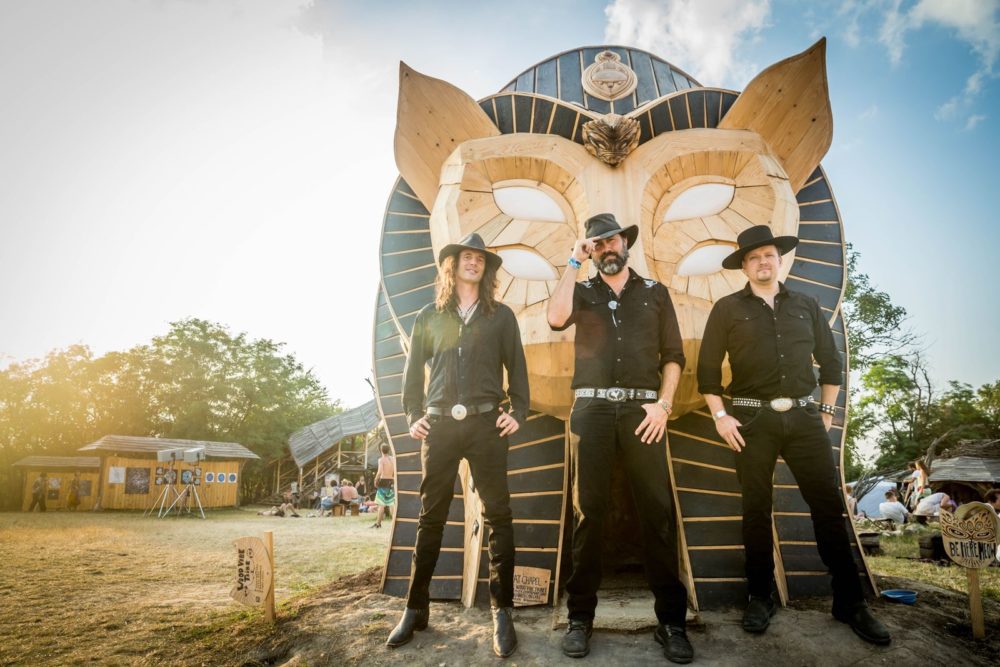

Music can carry a psychedelic experience every which way. It can evoke joy, heartbreak, or terror. It can cause you to dance, laugh, shake, or cry. It can bring you up into space or ground you back down to reality. It can open up the luminous rainbows of a commencing trip, or color the world with earthy greens and browns as you land down.
When I first received a review copy of Music for Psychedelic Therapy, an album designed to accompany psychedelic journeys by acclaimed English electronic composer Jon Hopkins, I was seeking the latter: a way to land. It was September, and I was recovering from a seemingly never-ending iboga journey that began in January.
After a transcendent flight through heaven back then, I’d fallen down the other side into a rabbit hole, conversing with invisible characters in my mind that spoke like Cheshire cats. For months, strange words and phrases, riddles and rhymes and paradoxes, were flooding into my brain from nowhere. I couldn’t find my way out of Wonderland.
When people decide to listen to psychedelic-inspired music, Wonderland is often exactly where they want to go. Hopkins says his album — which was made without beats to create a unique piece of art — is intended to conjure metaphysical experiences. “I’d like to think it could induce a trance state,” he says. “It’s intended to guide you deeply into yourself so that you can get in there and resolve some things.” One listener told him that his nine-year-old son saw swirling colors as he heard it. Another said it helped her grieve and move past the death of her brother.
“There’s no situation I’ve encountered where music is more powerful than in the psychedelic space,” he adds. “It’s like you can create a whole universe.”
As I contemplated the power of music to induce altered mental states, a dilemma presented itself: to listen or not to listen? Listening, I knew, could take me deeper down the rabbit hole.
But as I lay on top of my white comforter, closed my eyes, and hit “play” on the first song “Welcome,” I was surprised to hear slow, graceful synths and calm waterfall sounds – not the kind of trippy tunes that show up when you search YouTube for mushroom-inspired music and the like. Next came pouring rain and chirping birds in the following three tracks — dubbed “Tayos Caves, Ecuador i,” “ii,” and “iii” — and strings full of angelic tremolo in “Love Flows Over Us in Prismatic Waves.”
The highlight of the album, though, was “Deep in the Glowing Heart,” which paints a portrait of heaven with an airy choir and mystical chimes laid over bustling orchestral sounds.
While I listened to these tracks, I had a feeling of being high up in a plane, the sun peaking in from the pillowy clouds through the windows. Yet even as I heard the simple sparkly piano in the appropriately titled “Ascending, Dawn Sky,” I had a comforting sense that I’d come back down shortly — and sure enough, it was followed by the high-pitched organs and deep soft hums of “Arriving.”
Part of the impetus for Hopkins to create the LP was to provide a continuous soundtrack to cover a whole psychedelic journey from beginning to end. “People have been building playlists for the time of the medicine — that’s six or seven hours, and that’s lots of energies coming into your experience,” he says. “I liked the idea of it being held in one specific album.”
To my relief, the album served not as a shovel that dug me down deeper into a rabbit hole, but a rope that gently descended until I could grab it, then helped lift me out.
The very last song, “Sit Around the Fire,” incorporates a talk by the late spiritual guru Ram Dass, whom Hopkins had met before he died. It’s the only track with words and serves as an “integration” piece for Hopkins, a way to make meaning of the rest of the album.
As Ram Dass repeated the phrase “quiet the mind, open the heart,” I wondered whether the iboga had been working on me in a roundabout way: it was adding noise to my mind to teach me how to quiet it, how to get back into my heart no matter what else was going on around it. And as I sat up and meditated to his talk about learning to love all beings, I realized that perhaps I’d ventured into Wonderland just to see how much beauty there was back home.
Follow Jon Hopkins on Instagram and Facebook for ongoing updates.



